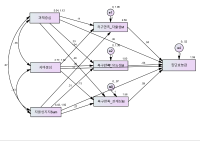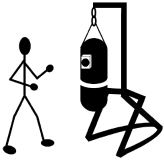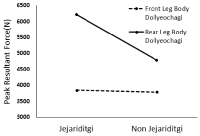PURPOSE The purpose of this study was to understand the athletic identity of youth football players and to trace its changing trend. METHODS Participants of this study included 93 players in 2005 and 94 players in 2021, who were in middle and high schools. All participants answered open-ended questionnaires. After the results of the inductive content analysis, the changing trend of the results was assessed. RESULTS The athletic identity of youth football players were collected from 811 raw data samples collected in 2005 and 741 collected in 2021 and categorized into 19 sub-categories and 5 categories. The results show a tendency to be specific to football. The athletic identity of a football player itself is weakening, being replaced by the identity of being a student. The role of the camp is also weakening, while more privacy and autonomy are allowed to the players. As a result, efforts to secure the players’ right to study were accepted by the players, and expected to decrease as camp life with limited privacy is on the decline, and as senses toward one’s physical competence are changing. CONCLUSIONS Sociocultural contexts, including changes in the system and social modifications, are reflected in the football player's athletic identity and its changes. The athletic identity of youth football players has changed from its 2005 version of unacademic camp life with limited privacy to the 2021 version, where the player leaves camp to be provided with privacy and attend classes.
PURPOSE This study examined the effect of sports life skills and life skills transfer of student-athletes and coaches, applying Actor-Partner Interdependence Model (APIM). METHODS Korean student-athletes and coaches from middle and high school sports teams participated in this study. There were 300 student-athletes (Mage=15.44, SD=1.64; male=218, female=82), with an average of 5.46 (SD=2.40) years of athletic career. Meanwhile, 33 coaches were (Mage=39.70, SD=8.36; male=26, female=7), with an average of 13.52 years of coaching career (SD=10.01). Measures included the Life Skills Scale for Student-Athletes (LSSSA; Jang et al., 2020) and Korean Life Skills Transfer Survey (KLSTS; Lim et al., 2018). Descriptive analysis, correlation, and APIM were undertaken by using the SPSS and AMOS programs. RESULTS First, the correlation between athletes’ and coaches’ life skills was not significant. Second, athletes’ life skills significantly affected their life skills transfer, similar to coaches’ life skills significantly affecting their life skills transfer. Fourth, coaches’ life skills did not significantly influence athletes’ life skills transfer, and the converse was not true either. CONCLUSIONS This study verified the effect of life skills development for two groups of athletes and coaches, on transfer in sports, and attempted statistical verification of whether it affects sports life skills and transfer between athletes and coaches. Although no statistically significant results were found in the partner effect, it is meaningful in that, it provided important implications for conducting a follow-up study on the relationship between athletes and coaches. In other words, it is expected to be a cornerstone for research on building a new model, along with investigating the interactive relations between athletes and coaches on life skills in the sports field.

This study aimed to explore the psychological factors affecting sports performance and their purposes as perceived by adolescent athletes. Study data were collected by conducting an open-ended survey with 232 student athletes from adolescent athletes in S city. The collected data were categorized using content analysis, which was conducted twice to explore the psychological factors affecting sports performance and their purposes. From 537 answers, 30 performance-affecting psychological factors—including confidence, endurance, effort/dedication, optimal tension, and social support—were identified, and they were classified into five categories: psychological fundamental, mental toughness, motivation, emotional stability, and social relationships. From 588 answers, the purposes of the psychological factors were identified, including performance achievement, motivation enhancement, demonstrating mental toughness, cognitive strategy, confidence increase, emotional regulation, injury prevention, game strategy, and reinforcement cohesion. These performance-affecting psychological factors and their purposes may serve as a reference to understand how secondary school students perceive the relationships among various psychological factors and the relationship between the psychological factors and performance. This study is expected to inform goal setting and content organization in psychological skills training.


Purpose This study aims at investing the educational meanings of school physical education policy by analyzing the direction (ideal goal, goal, objective and program) of the policy in Korea and England. Methods The comparative research design was conducted by the policy literature analysis. In order to clarify the significance of the main discourse embedded the school physical education policy to the educational practice, I used qualitative content analysis based on the interpretive paradigm. Results The school physical education policy in Korea is divided into goal for general students and student athletes for 'happy students and school life', while the policy in England seeks to promote participation of competitive sports through school-community linkage for lifelong sports participation. As a result of the discourse analysis, the ambiguity of school physical education policy due to the complexity of various discourses (e.g. moral development, health, sports) diminishes the effectiveness of policy implementation as well as the teachers’ educational practice. In addition, competition sports discourse has been analyzed to limit the participation of many students in sports and to adversely affect lifelong participation in sports. Conclusions In conclusion, It is necessary to activate theoretical and empirical research that is the basis of building the school physical education policy direction and to establish cooperative governance for the policy implementation. In addition, student participation in lifelong sports and evidence-based policy making and practice are required.


In sport context, the motivational climate created by significant others (e.g., coachs and peers) has been influences on the athletic-student's motivation, engagement, performance, and skill development. Collective efficacy is important for team performance because it influences a group's task choice, effort expenditure, persistence in the face of failure, and resistance to discouragement. This study was to examine the influence of peer motivational climate (i.e., task-involving and ego-involving motivational climate) and coach autonomous support for basic psychological need satisfaction and collective efficacy. In the study, participants were 289 athletic-students' of team sports. In the study then, questionnaire was assessed using by the correlation and path analysis. The results showed that task-involving motivational climate significantly predicted of collective efficacy, while ego-involving motivational climate were negatively predict to the collective efficacy. The results suggest the importance of considering peer influence in addition to coach influence when examining motivational climate in team sport.

PURPOSE This study aimed to explore the re-socialization process of college soccer players who rejoin college soccer clubs after dropping out. METHODS A case study approach was employed, and participants were selected using the snowball sampling method. Data were collected through in-depth interviews, participant observation, and literature reviews. The authenticity of the data was validated through triangulation, member checking, and peer debriefing. All research procedures were conducted following approval from the institutional review board. RESULTS The study revealed several key findings. First, participants faced numerous challenges during the re-socialization process into sports, including interpersonal, academic, and emotional difficulties. Second, distinctive features of the re-socialization process emerged, including the determination and effort required for adapting to university life, support from socialization agents within the university, and rapid re-socialization following dropout. Third, experiences within collegiate soccer clubs indicated low barriers to entry for former athletes, academic success through complementary relationships, a hierarchical culture familiar to student-athletes, and enhanced satisfaction in interpersonal relationships and a sense of belonging. CONCLUSIONS This study underscores the importance of institutional support that enables college athletes to participate in sports clubs, facilitating the successful re-socialization of athletes who have dropped out.
Purpose The purpose of this narrative inquiry was to explore the educational meaning of managing a specialist physical education school (SPES) and to suggest policy supports. Methods Semi-structured interviews with a physical education teacher who had managed a SPES and document analysis were undertaken. Data collected were analysed using constructivist grounded theory. Results In telling, four themes were described, which include: backgrounds that the teacher took over the SPES, cases of reforming the SPES and its impacts, pressures from a private physical education alliance, and the SPES has a long road ahead. In re-telling, a need of re-conceptualizing public education based physical education career education and four policy supports were discussed. Conclusions Developing a range of models for SPES-community connection, exploring longitudinal effectiveness of managing SPES as physical education career education, and exploring effective SPES models for student-athletes are suggested as future research.

Purpose The purpose of this study is to investigate the comparison of peak resultant force in taekwondo body dollyeochagi in accordance with Jejariditgi existence and the position of kicking leg. Methods Twelve students who majored taekwondo participated in this experiment. They have a forth dan(degree) black belt in taekwondo. The peak resultant force was measured 12 times(2 jejariditgi existence × 2 position of kicking leg × 3 times). Two-way ANOVA with repeated measures was used to analyze the data. Results There was significant difference in interaction effect of peak resultant force in taekwondo in accordance with jejariditgi existence and the position of kicking leg. And there was significant difference in main effect of peak resultant force in taekwondo in accordance with jejariditgi existence and the position kicking leg. Higher peak resultant force was shown in body dollyeochagi with jeariditgi as compared with non jejariditgi. And higher peak resultant force was shown in rear kicking leg as compared with front kicking leg. Conclusions The results show that jejariditgi is a factor affecting the peak resultant force. Comparison of peak resultant force in taekwondo body dollyeochagi in accordance with jejariditgi existence and the position of kicking leg will provide strategies for coaches and athletes to perform improved taekwondo dollyeochagi.




PURPOSE This study investigates the effectiveness of biomechanics information on intermediate golfers driver swing learning. It analyzes changes in center of pressure (COP) patterns, GRF Direction Inclination, driver performance, and learners psychological responses to determine the learning effects. METHODS Subjects were 32 right-handed male golfers (handicap 15-23) who had no difficulty in performing the golf driver swing (Full swing). Four groups were selected, BF (Biomechanics Feedback group), BVC (Biomechanics Verbal Cue group), CB (Combination group), and CT (Control group), and assigned randomly. Driver swing learning showed results after 6 weeks,and a transfer test was conducted 1 week after the completion of the learning. RESULTS Analysis of COP patterns and GRF Direction Inclination indicated changes in the BF, BVC, and CB groups. Furthermore, analysis of driver distance (m), club head speed (km/h), and ball spin rate (rpm) revealed that during the 6-week acquisition phase, all three groups (excluding the control group) showed improvements in driver distance, club head speed, and ball spin rate. However, there were no statistically significant differences among the groups. In contrast, the transfer test showed statistically significant differences among the groups, with the CB group exhibiting the highest driver distance. Learners' psychological responses during the learning process were trust, understanding, and satisfaction. The understanding factor was relatively higher in the CB and BVC groups compared to the BF group. CONCLUSIONS In summary, biomechanics information (BI) was effective in improving driver performance, and changesappeared in the COP pattern and GRF Direction Inclination, indicating a change in movement. Therefore, BI can be fully utilized for athletes or high-level advanced players and for motor learning for intermediate-level students.However, BI can only improve learning effects by strengthening learners' “understanding” when visual feedback forms and verbal cues are provided together.